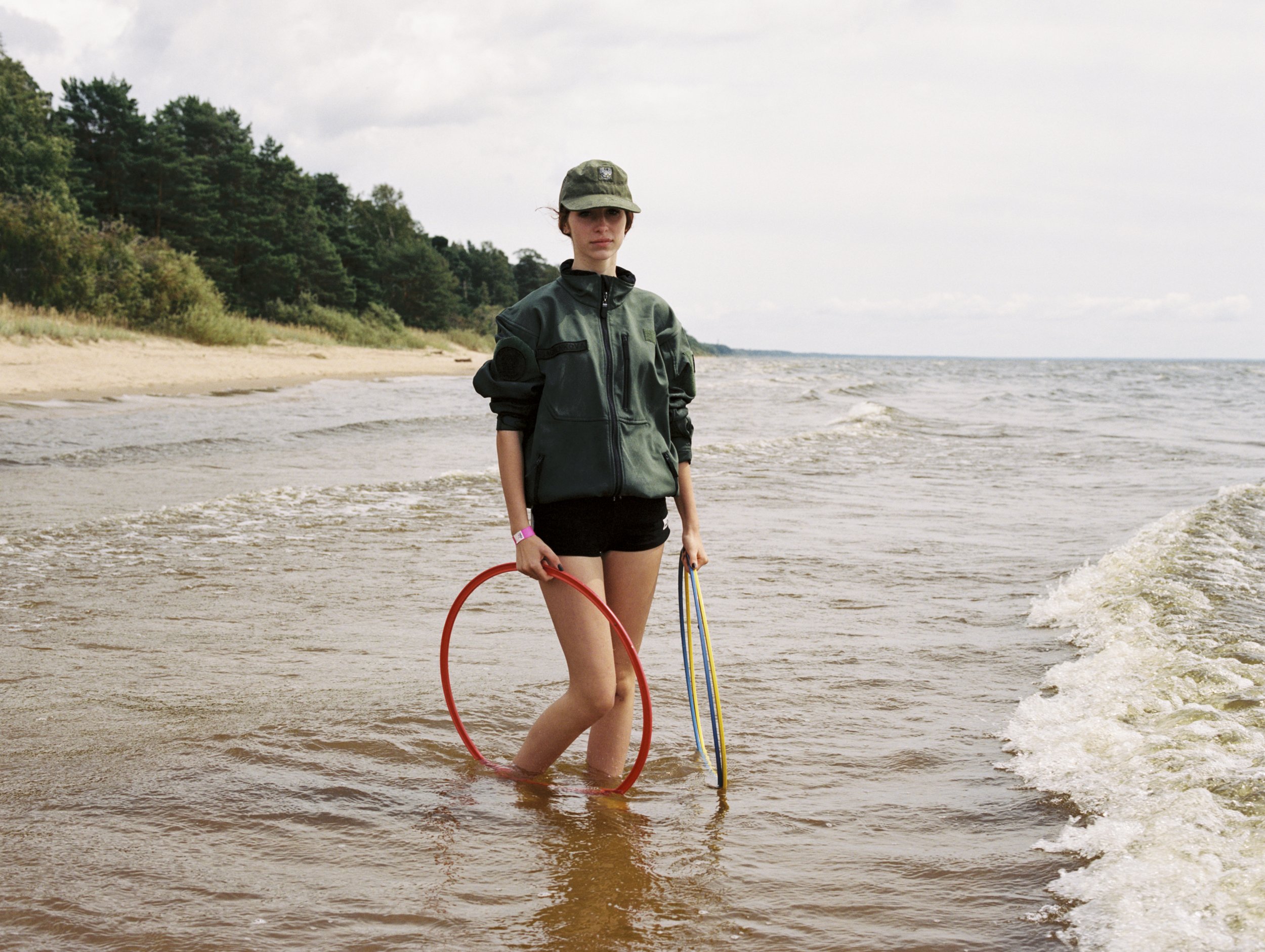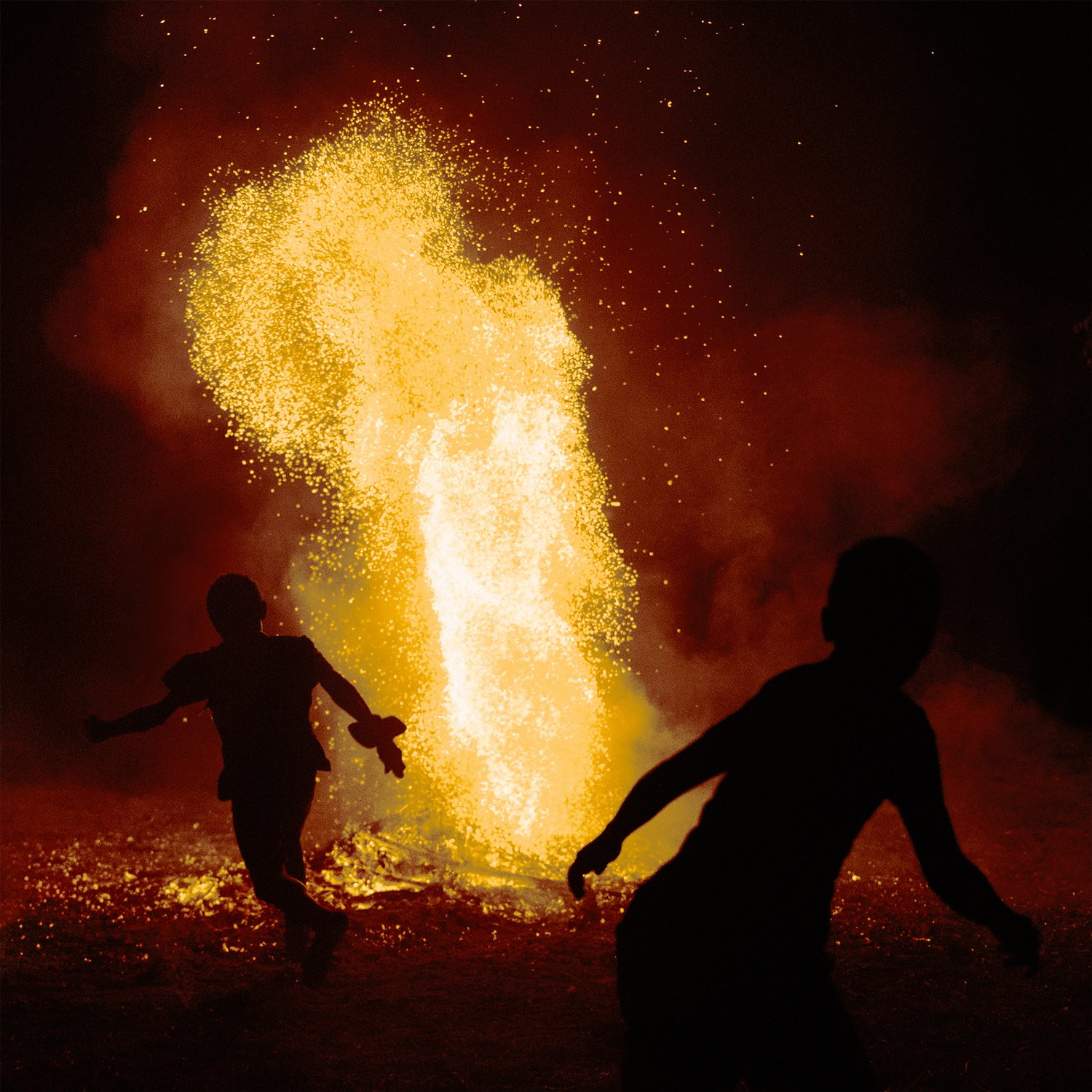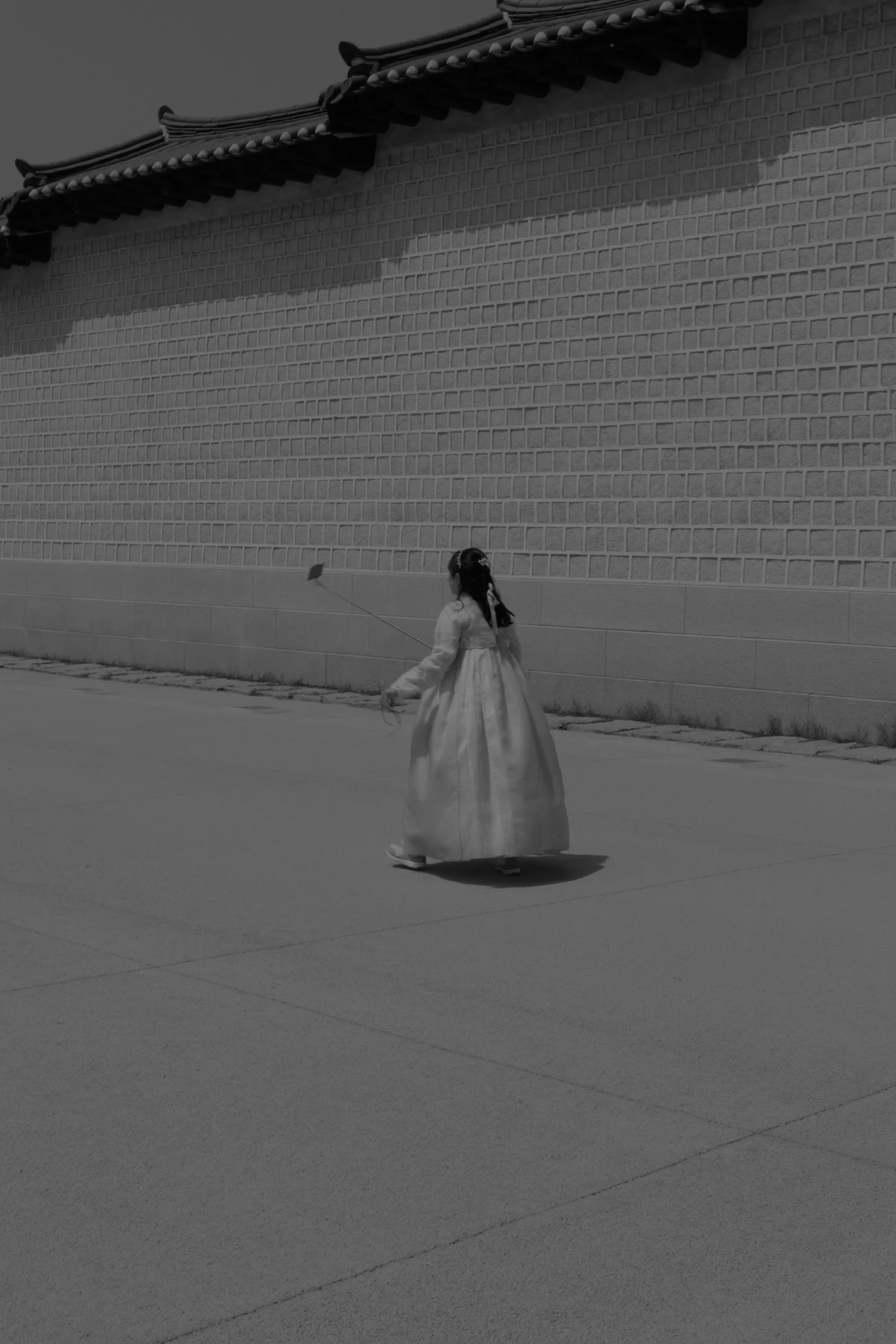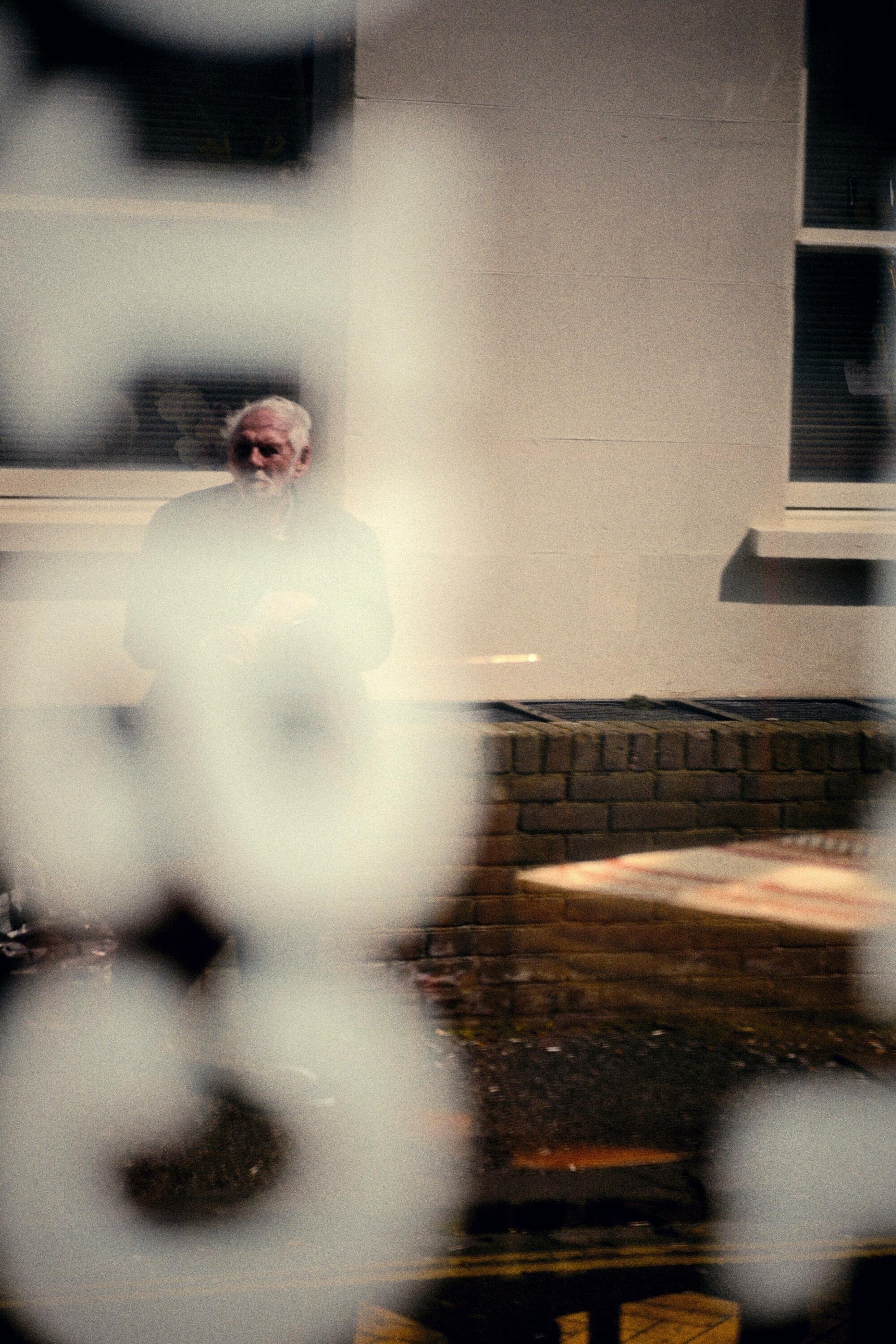ICONS: Chris Killip
One of Britain’s finest documentary photographers, Chris Killip was renowned for his stark yet poetic photographs of the North of England in the 70s and 80s. Against the backdrop of deindustrialisation and huge social change, he photographed individuals and communities who, he said, had history “done to them”.
By Charlotte Hughes-MorganAs the most comprehensive survey of this work to date comes to an end at the Photographer’s Gallery, Killip’s raw yet tender portrayals of forgotten societies are a reminder of the vital role photography plays in drawing attention to those whose lives unfold away from the spotlight.
What makes Killip’s work so mesmerising is the undeniable connection he has with his subjects. Killip famously spent time within the communities he photographed and the trust between photographer and photographed is a feature throughout his oeuvre.
Credit: Bever, Skinningrove, N. Yorkshire, 1983
© Chris Killip Photography Trust/Magnum Photos
Killip’s early photographs of his own community on the Isle of Man [1970-1975 – Manx] beautifully juxtapose the scale and ruggedness of the natural world with intimate close-up portraits of individuals. Killip captures his subjects with raw intensity without ever seeming invasive. The members of these communities confront the viewer as if interrupted suddenly in their daily life. Some are coy or questioning, such as ‘Stanley Quirk, Cooilslieu, Greeba’ who stands smiling behind a half-open wooden gate, whilst others, like ‘Mrs Barbara Hyslop’, gaze at the viewer with unflinching severity.
Many of the images show people wrestling or working with the natural surroundings in which they leaved, showing both the deep connection to nature and the hold it has over their lives and livelihoods.
Credit: Bever, Skinningrove, N. Yorkshire, 1983
© Chris Killip Photography Trust/Magnum Photos
Credit: Unidentified man and Brian Laidler, Seacoal Beach, Lynemouth, January, 1984
© Chris Killip Photography Trust/Magnum Photos
Chris Killip’s seminal photographic series focused on the North of England in the 70s and 80s. Children feature frequently in these photographs, sometimes at the centre of the composition but more often as one part of the bleak, changing landscape. The innocence of childhood is almost but not quite subsumed by the gritty omnipresence of industry. In ‘Two girls in Middlesborough’ plumes of factory smoke billow overhead as the young girls giggle side-by-side, apparently oblivious to the towering factories behind them.
One of the most striking images is ‘Youth on a wall’. One of the few unnamed close-up portraits in the retrospective, the boy’s anonymity suggests he is one of many in this town. For almost the first time, we feel uncomfortable with the intimacy. The nameless boy’s body is scrunched up in a private moment of angst. It is hard to gauge whether he is sad, frustrated, enraged or all three. The reasons for his frustrations are unspoken but the decaying industries and way of life depicted in the other photographs offer some explanation.
Credit: Youth on wall, Jarrow, Tyneside, 1975
© Chris Killip Photography Trust/Magnum Photos
Killip famously said that the people he photographed “will never appear in history books. Because ordinary people don’t.” He set out to give the lives of these ‘nameless’ individuals a place in history that they otherwise wouldn’t have. Nowhere is this encapsulated more strongly than in his depiction of one street in Tyneside – Camp Road. In a mere three photos, he manages to convey the destruction of a whole way of life.
The ‘Super Tanker’, a vast ship, looms above the town in the first image shot in 1975, an ever-present symbol of the shipbuilding industry driving the local economy. By the time Killip photographs the same street later in the same year, the tanker has vanished and ‘Prepare for Revolution’ has been sprayed onto a previously empty wall. The final photograph of the street is simply a pile of rubble. With the main economic driver removed, a way of life has been demolished along with the shipbuilding industry. The children playing on the street are a reminder of the many generations and futures affected by the tumultuous shifts of the time.
Credit: Girls Playing in the street, Wallsend, Tyneside, 1976
© Chris Killip Photography Trust/Magnum Photos
Killip photographed Skinningrove in North Yorkshire between 1982 and 1984, ingratiating himself in an insular town and taking some of his most poignant and reflective photographs. Here, Killip’s focus is more obviously on the people in the local community.
The natural world continues to play a key role in the images but the ties between land and people seem somehow closer. The importance of the sea and its potency complements an vigorous, fresh desire for self-expression amongst the younger members of the community, with whom Killip developed a strong bond. The curation at the Photographer’s Gallery retrospective cleverly reflected this, with the photos placed closer together in one section of the gallery, giving an overall impression of a whole community made up of different personalities across generations.
Credit: TT Races Supporter, Isle of Man, 1971
© Chris Killip Photography Trust/Magnum Photos
Curator of the recent retrospective, Ken Grant, notes that Chris’ connection to the communities he worked in is what stands out in these photographs. His photographs from Lynemouth, Northumberland depict a people rooted in the landscape but not lost in it. They work with the resources around them and respect the areas beyond their control. After finally overcoming the community’s hostility to his presence, Killip ended up moving into a caravan on the beach of the town in order to capture the rhythms of the beach.
A series of photographs of children with animals highlights the integral place of humans within a centuries-old ecosystem. Manual labour is a defining feature of this way of life. In many images, the motion of horses and the sea conveys a community that thrives off its ability to harness the power and resources of the natural world.
Without a doubt, In Flagrante is Killip’s most renowned photobook. He challenged the orthodoxy of narrative form and, as curator Ken Grant notes, the sense of community is at the heart of his pictures. Some of Killip’s most iconic images however were not released until much later.
Discovered by Killip’s son thirty years after they were taken, photographs taken inside The Station music venue in Gateshead capture the raw energy of the counter-culture punk movement that changed the face of the 1980s in the UK. The images are almost uncomfortably intimate and take us directly into the sweaty underground punk scene where young people came together to take aim at the system through a new, disruptive music and dance.
Credit: The Station, Gateshead, 1985
© Chris Killip Photography Trust/Magnum Photos
Moving through Chris Killip’s work, it becomes clear that he is part of the broad ‘family’ of people he depicts. He is so integrated into the communities that his subjects at time seem utterly oblivious to his presence and at other times blisteringly conscious of it, in the same way one can only feel towards a family member or a close friend.
Family on a Sunday walk, Skinningrove, 1982
© Chris Killip Photography Trust/Magnum Photos
About Charlotte
Charlotte Hughes-Morgan is a freelance journalist based in Hoxton, London. She is currently pursuing a masters in broadcast and digital journalism but regularly writes articles on a wide range of subject areas, including art and business. Charlotte previously worked in PR and communications for two years before retraining in journalism. She is passionate about visual arts, particularly photography, and can often be found in one of London’s many galleries.
To see more of her work, follow her on Twitter






































